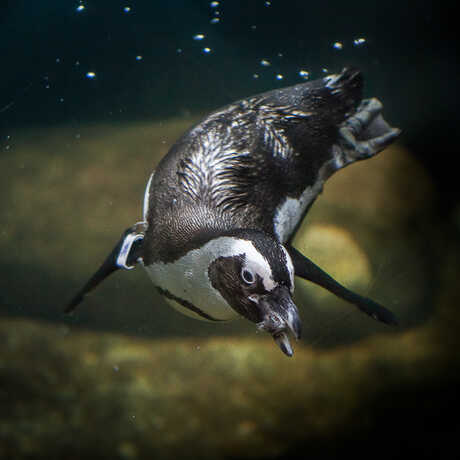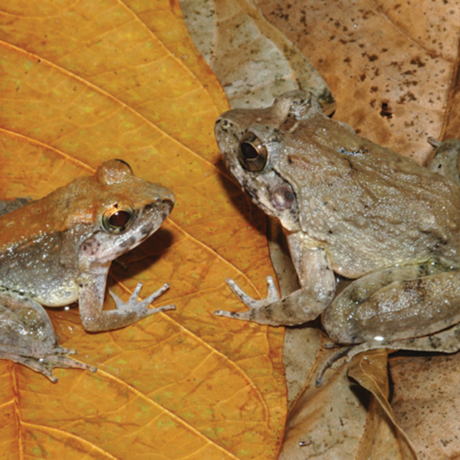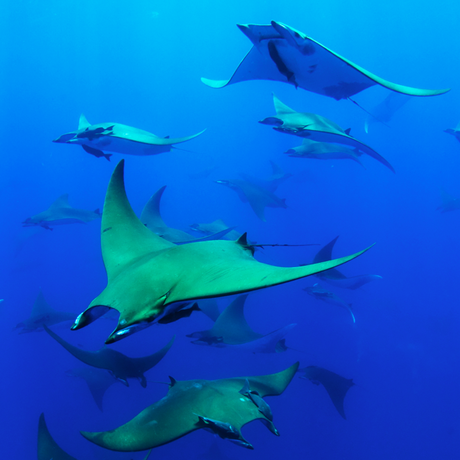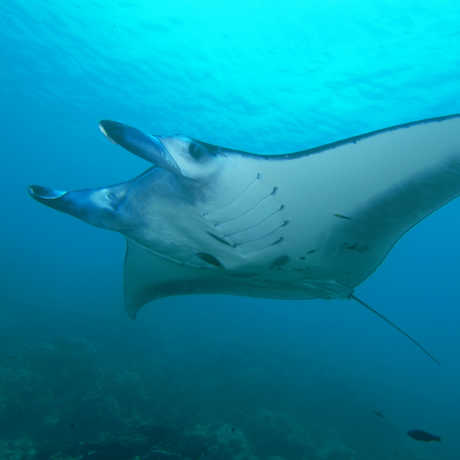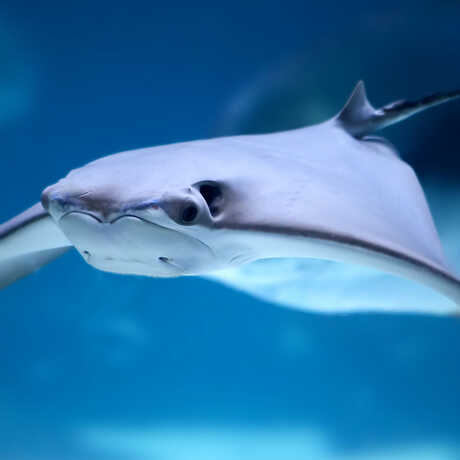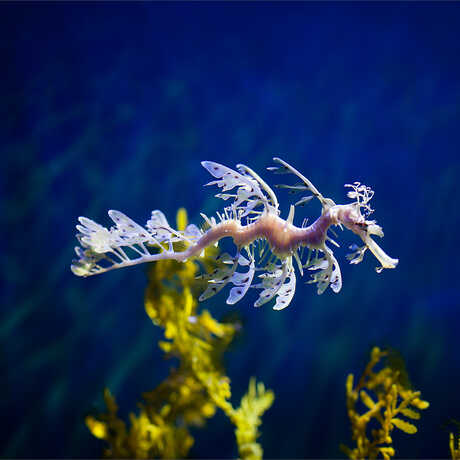Bluespotted Ribbontail Ray
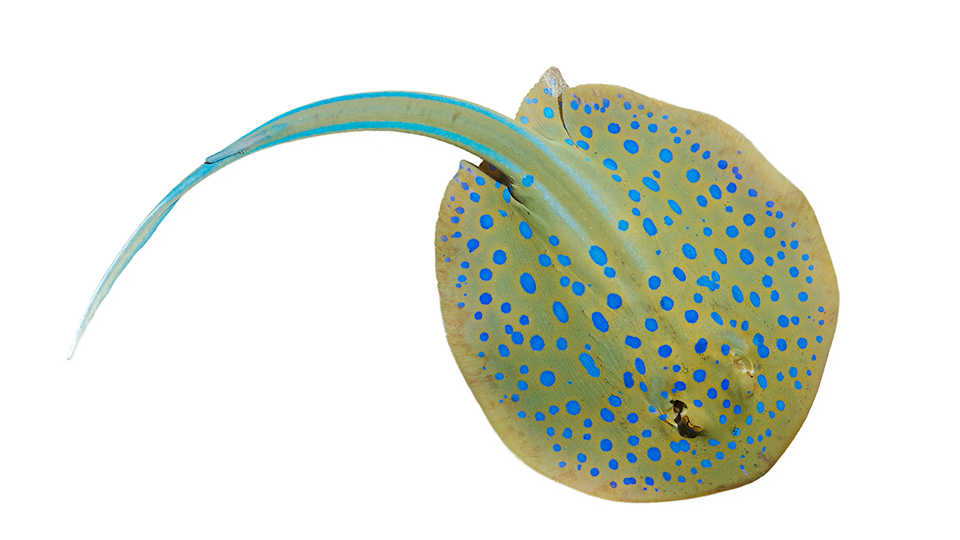
The iridescent blue spots on the body of the bluespotted ribbontail ray (Taeniura lymma) are a warning, not an invitation. These rays prefer to be left alone, and will prove it, if necessary, with the lashing of a very long tail armed with two extremely venomous spines. Though their poison can be fatal (even to humans), they're most likely to swim away from confrontation—perhaps because other than humans, their most consistently documented predator is the hammerhead shark.
Ribbontail rays generally live in small groups, but when the tide rises they migrate en masse to shallow, sandy areas, where they bury themselves in the sand to scoop up food. (They’ve also been seen scavenging the occasional shipwreck.) The ray’s mouth and gills are both on the underside of its body, enabling it to breathe easily while it casts around for mollusks, crabs, shrimp, worms, and small fish, crushing up prey between two plates made up of smaller teeth. When the tide recedes, the school of rays returns to the ocean and takes shelter in the coral reef.
Range and Conservation Status
Bluespotted ribbontail rays are found primarily in shallow waters in the tropical Indian and western Pacific oceans, though they’ve been spotted near Australia and southern Africa as well. As resilient as they are in the ocean, ribbontail rays fare poorly in captivity, especially private aquariums. Since they also reproduce slowly and in small numbers, their attractiveness to humans is a serious liability, earning the species a Near Threatened conservation status.
Electroreception
While rooting around with their mouths in the sand, ribbontail rays use a system called electroreception to help locate prey (as well as predators and friends, in other circumstances). Using sensing organs called the ampullae of Lorenzini, rays pick up on subtle electrical fields and temperature gradients generated by other animals. Electroreception is mostly exclusive to the marine world, since water is a better conductor than air, but it’s also been observed among bees, cockroaches, and spiny anteaters.
Ovoviviparity
Ribbontail rays are ovoviviparous, meaning offspring grow inside eggs within the mother’s body and are born live shortly after they hatch—a trait shared with certain sharks as well as snakes and insects. Ray gestation periods vary from four months to as long as a year, and every litter can contain as many as seven ray pups, each of which is born with a unique, miniature variation of its parents' blue spots.
These dazzling rays can be found skimming along the bottom of the cylindrical tank adjacent to the Reef Lagoon.
Be mesmerized by colorful coral reef fish, soaring stingrays, and adorable African penguins—streaming live to your device, 24/7.
